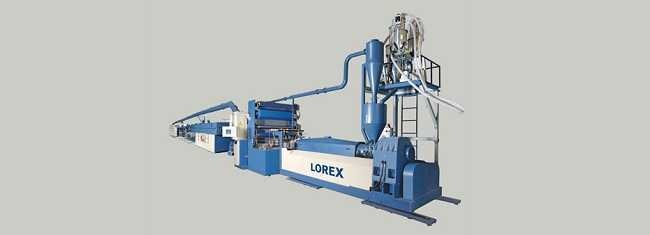|
The paint shop of automobile
manufacturers is capital intensive and faces problems of polluting
the environment with volatile solvents, prompting all the major
auto manufacturers to consider looking at an alternate option. The
answer to this can be provided by decorated plastic films, by using
the films in the “In Mould Process” or “Thick
sheet forming”.
In Mould Decoration is not new and has in fact been in use for more
than a decade. In Mold Decoration (IMD) with formable film inserts
is replacing traditional post-mold painting, printing, hot stamping
and chrome plating. The process achieved its first successes in
modestly sized and relatively flat parts for interior and exterior
automotive trims and cell phones. Today, IMD technology has progressed
to much larger 3D parts such as entire instrument panels, bumpers,
fascias, roofs and even hoods for cars and trucks. What’s
said to be the first commercial unpainted horizontal body panel
has already appeared on the Smart two-seat roadster. In fact, NPE
2003 showcased significant IMD innovations, all aimed mainly at
auto products. IMD can achieve a Class A surface and eliminates
the expense of secondary operations, which is proving especially
attractive to the automotive industry. However, the economics of
IMD can suffer if there are a large number of holes in a part as
the holes require a post-mold trimming operation.
| Company |
Type of IMD Film |
Characteristics |
| Avery Dennison |
Acrylic/PVDF film backed with thicker ABS/TPO Sheet |
Can provide gloss/matt surface finish, metallic finish also
possible |
| GE Plastics |
Clear UV stabilized Polycarbonate Co-extruded SLX film |
Can be used with PC, PC alloys and Polyester |
| Mayco Plastics |
Class A Glossy 3 layer Co-extruded film of PP and ionomer |
Can be used on PP |
| Senoplast |
3 layer Co-extruded PMMA with PC/AS blend |
Can be used on ABS, PC or PC/ABS blends |
There are several applications, particularly in the exterior of
automobile, that are being actively considered for IMD technique.
Recently Thick Sheet Forming Technique (TSF) with decorated film
is also being explored for large automotive parts.
One advantage of TSF is its relative simplicity. TSF requires only
sheets and a forming machine, whereas IMD for injection molding
requires two machines, two tools and two starting materials. TSF
reduces variables and quality risks. Thermoforming tools for TSF
are less expensive as compared to injection molds for IMD and they
can be delivered in a shorter time. TSF is most suitable for large,
flat panels and relatively low volume parts and it does have limits
on draw depth, radii and contours. There is a possibility that TSF
parts could suffer colour changes from excessive stretching and
thinning of films in high-draw-ratio parts. TSF is also more limited
than injection molding in incorporating holes or attachments.
IMD technique has been used for quite some time on electronic products
such as mobile telephones, laptop PCS and host of other products.
What is new is the recent development of IMD or TSF for automotive
exteriors. If this development succeeds,
perhaps painting of automobile may cease. Of course it will
take at least a decade or even longer.
Previous Article
Next Article
Tell Us What You Want

Lohia tape stretching line
| | | |
